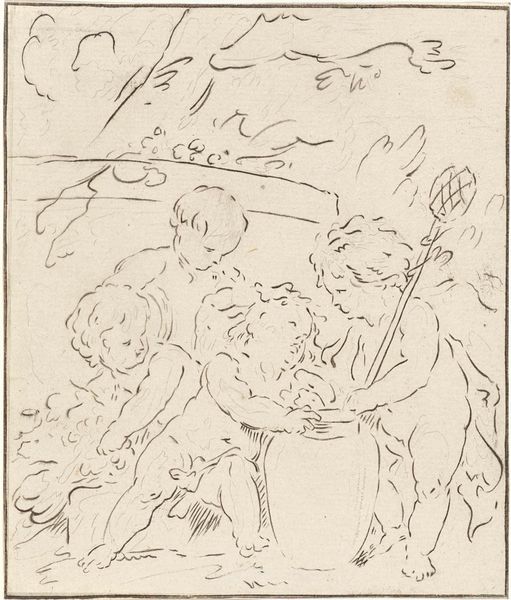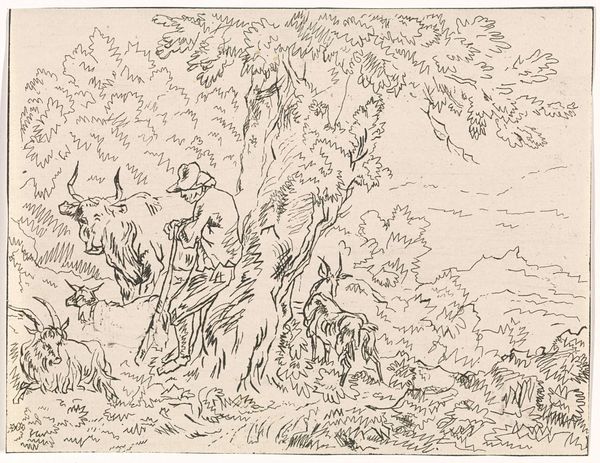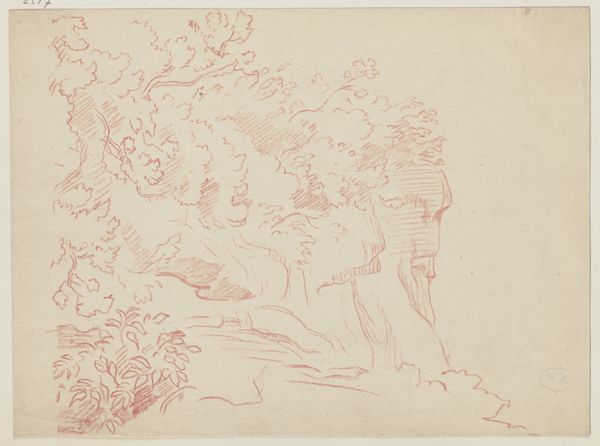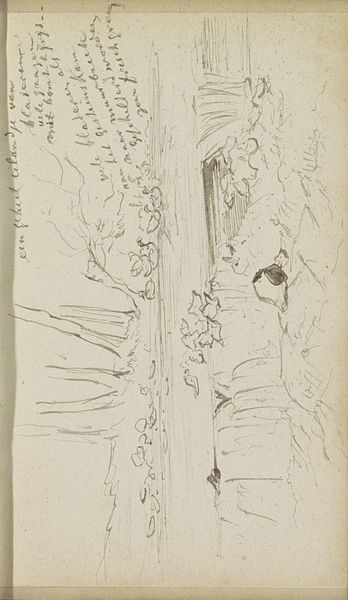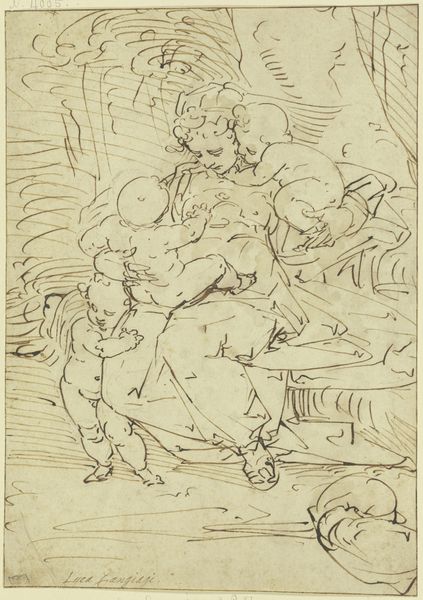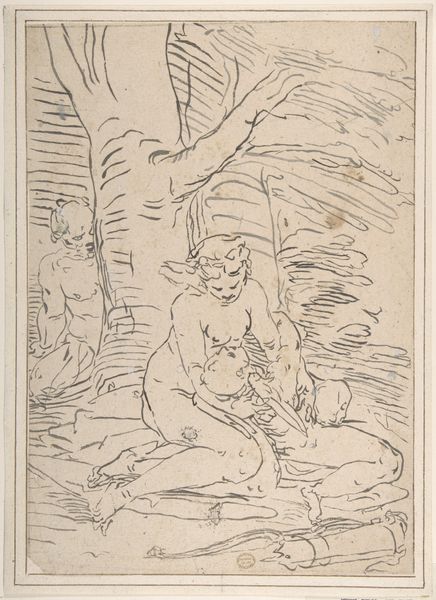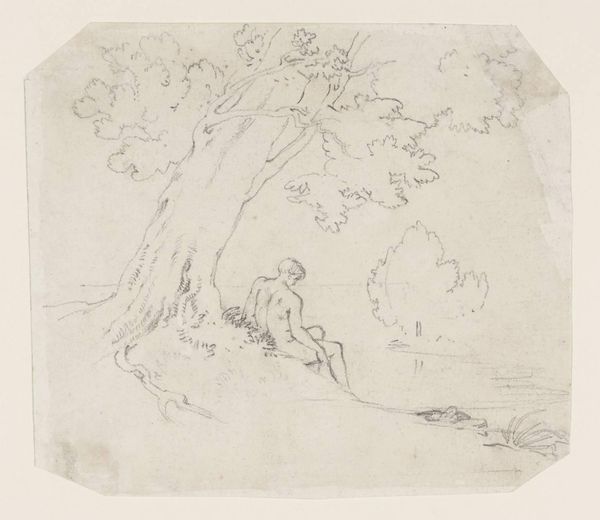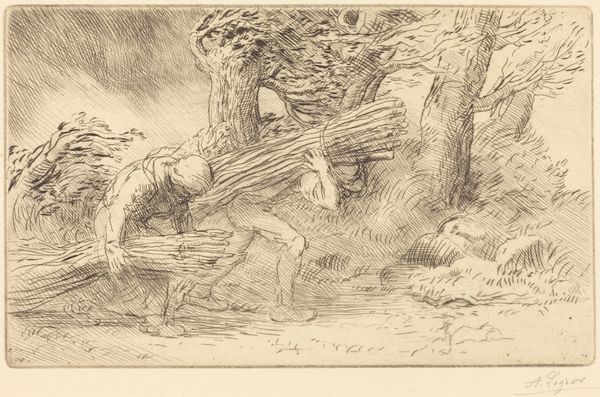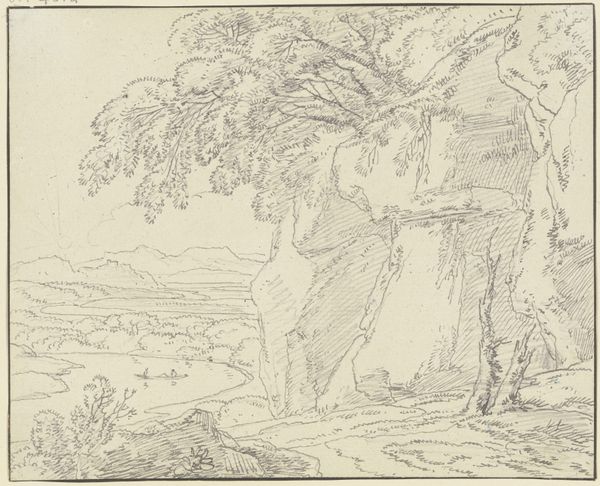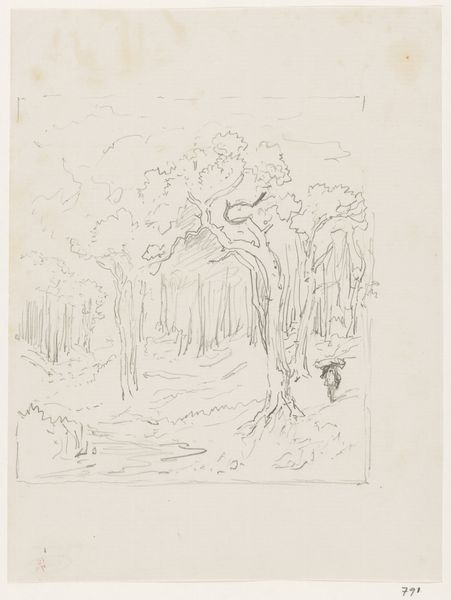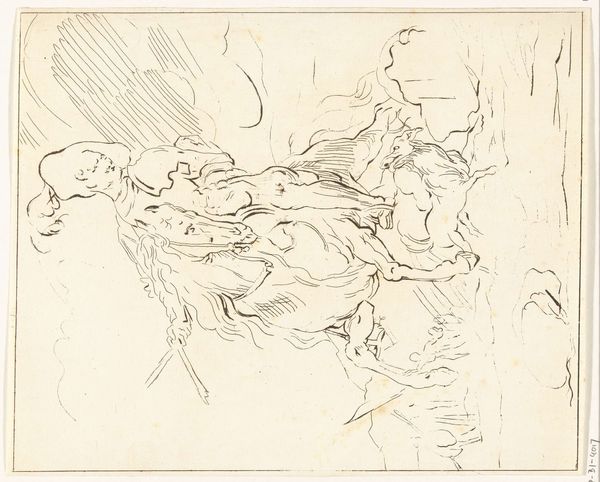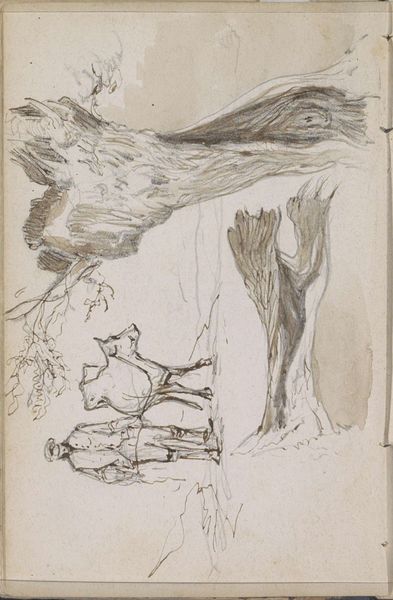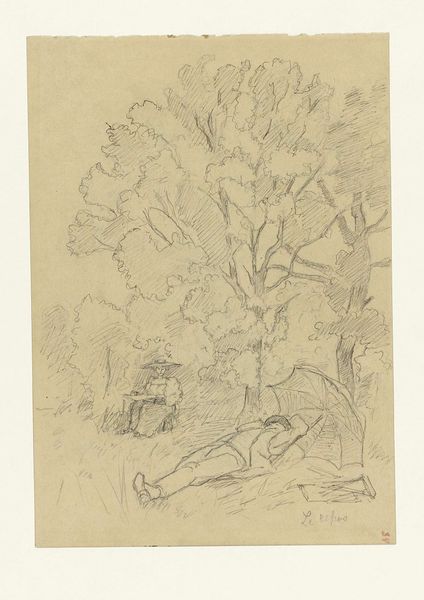
drawing, ink, pen
#
drawing
#
comic strip sketch
#
ink drawing
#
pen sketch
#
landscape
#
personal sketchbook
#
ink
#
ink drawing experimentation
#
folk-art
#
pen-ink sketch
#
pen work
#
sketchbook drawing
#
pen
#
genre-painting
#
sketchbook art
#
rococo
#
initial sketch
Dimensions: height 199 mm, width 144 mm
Copyright: Rijks Museum: Open Domain
Curator: Before us we have "Landschap met herder en herderin en hun schapen", or "Landscape with Shepherd and Shepherdess and Their Sheep," a drawing by Guillaume Saint, created sometime between 1740 and 1780. Editor: It has a rather idyllic, even naïve, quality, doesn't it? The sketched lines, the unassuming composition...it almost feels like a scene plucked from a pastoral dream. Curator: Exactly! It reflects a romanticized view of rural life that was very popular then. These pastoral scenes often glossed over the harsh realities of agricultural labor, idealizing a simple existence in harmony with nature. Saint likely drew inspiration from the prevailing artistic and literary trends of the era that celebrated the beauty and innocence of the countryside. Editor: The ink-and-pen medium certainly lends itself to this dreamlike quality. The minimal shading and fine lines create a sense of airiness, almost as if the scene is dissolving into the background. Note how the figures are positioned amidst a backdrop of foliage. What statements might you make of this? Curator: One interpretation is that the figures become part of the landscape, blending into the natural order. It obscures how class hierarchies influenced labor relations; it's a form of subtle commentary on who gets remembered by history, what bodies are valued in a painting, what activities deserve a picture. Editor: But doesn’t that overstate the intention? Could it not simply be about pictorial harmony, using the landscape to frame and enhance the human figures? We see that the figures' curves echo in the posture of the sleeping sheep. It makes for pleasing pictorial rhythm. Curator: I think it is important to consider that artistic representations of shepherds and shepherdesses at this time often perpetuated very simplistic ideas of social justice. There's an element of social critique embedded here, conscious or unconscious. We need to reflect on what's emphasized and what is glossed over, the people history remembers as its protagonists. Editor: It gives us much to consider as we depart! The piece invites us to consider not only the visible composition, but also what is left out. Curator: Indeed. And that careful balance between representation and romanticizing reveals how aesthetics and ideologies always intertwined.
Comments
No comments
Be the first to comment and join the conversation on the ultimate creative platform.
